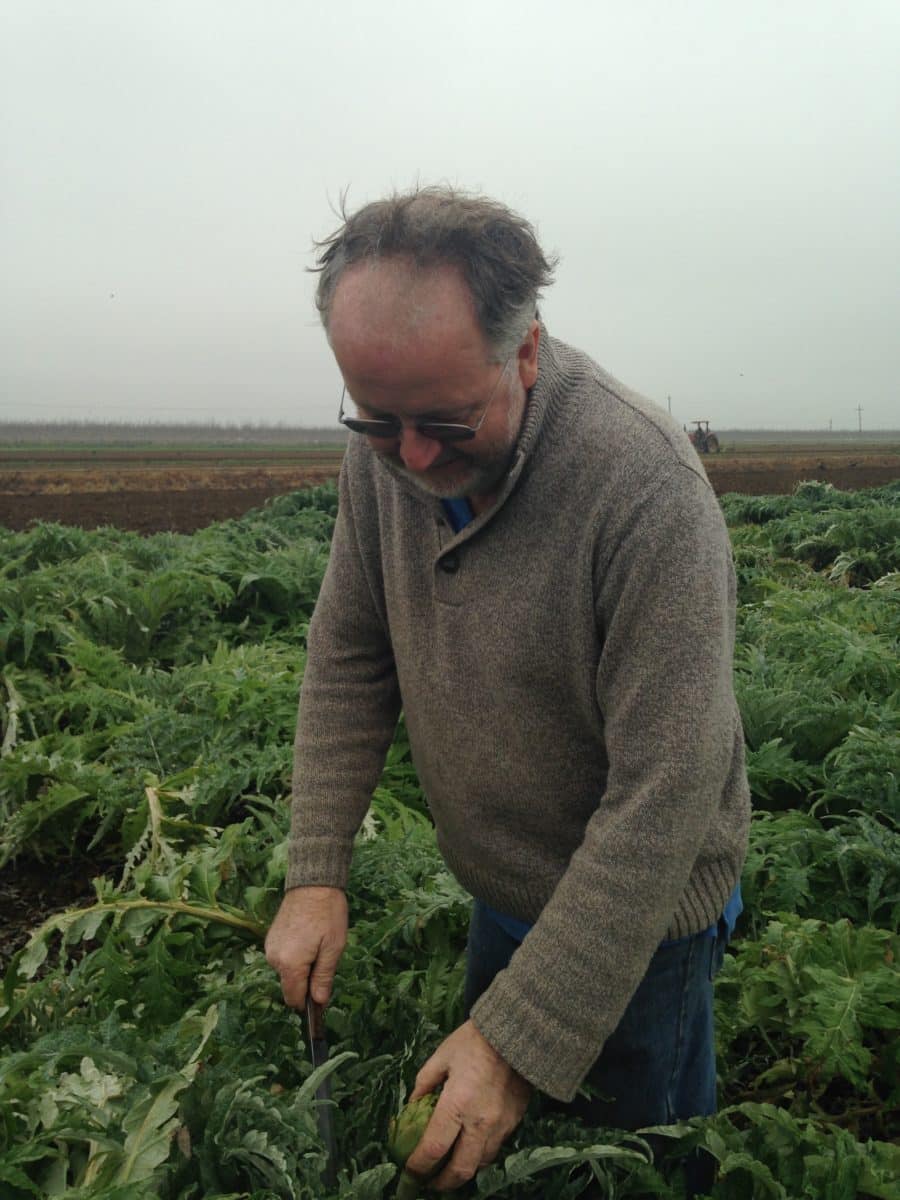Since California grows virtually 100% of the artichokes commercially produced and consumed in the United States, it is not surprising that the artichoke is the state’s official vegetable. Monterey County alone produces 75% of the total production, the majority of that centered around Castroville which has proclaimed itself the Artichoke Capital of the World.
A visit to an artichoke farmer’s fields will show great stretches of the waist-high, spiky-leafed plants. Artichokes are perennial, the plants sometimes lasting ten years before needing to be renewed, but increasingly artichokes — both commercially and in home gardens — are being treated as an annual and re-planted each year, a method that encourages strong well-formed plants. Seed companies have even developed new seed selections especially suited to annual production.


In the Mediterranean region, where artichokes have been consumed for thousands of years, it is a commonplace vegetable. However, some of the artichokes of southern France and southern Italy are quite unlike the big, heavy globes grown in Brittany or like those in the United States. In the French and Italian markets you’re likely to find smallish, pointed-leafed, purple artichokes on long stems, gathered into bundles of three to five. Sometimes the leaves have nasty thorns on them, a throwback to the original, wild species. These are my favorites and the ones I like to grow in my own garden, not only because they are pretty, but because they remind me of Provence. The flavor of the heart is not too different from the Green Globe types, but the stems are milder. Artichokes are usually eaten after they are cooked — usually steamed — so the heart and bases of the leaves will be tender. However, in Provence some restaurants will ask if you want your artichoke cru or cuit–raw or cooked. I have tried them raw, and I suppose it is an acquired taste which I have not developed. My neighbor in Provence — a market grower, now deceased — loved to strip off the leaves right in the garden, and then slice up the heart with his knife.
However, I suggest cooking them first. Once cooked — and the simplest way is to steam them whole — you can serve them with vinaigrette, mayonnaise, aioli, or other sauce for dipping. You can also separate the leaves of a cooked artichoke to reach the heart, then scoop out the inner leaves and thistle to create a cavity to fill with crab or shrimp salad.
I also like to cut them up raw and sauté them in olive oil, or parboil them and finish them on a grill.
However you choose to cook them, now is the season to indulge in one of California’s most singular vegetables. ![]()
First published April 2015
